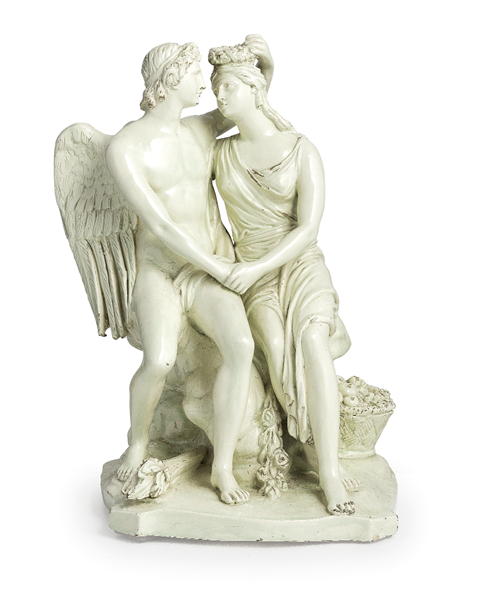A selection of maiolica and porcelain – both from Italy as well as Europe – from the Sixteenth to the Twentieth centuries will also be featuring in the auction of Furniture, Sculpture and Objets d’Art on May 16th.
There will be a wide choice of maiolica from the Seventeenth to the Nineteenth centuries including an elegant compendiary crespina decorated with a allegorical cherub, possibly from the Utili workshop. There are some further interesting examples of maiolica from Novi from the Eighteenth and the Nineteenth centuries including a fine coffee pot decorated with a ponticello design – datable to around 1770 – and two blue and white maiolica plates with a floral pattern from the Antonibon workshop and datable to around 1730.
Among the pieces from the Nineteenth century, there will be a rare centrepiece mounted with a dolphin from the Viero manufactory, dated to the last few decades of the Nineteenth century and published as number 18 in the manufactory’s catalogue.
A superb pair of vases from the same period with a polychrome maiolica base – from Novi – in a style of eighteenth-century origin that continued to be popular right into the Nineteenth century is also featuring in the sale.
There are also two large mythological groups in creamware that may be attributed to a central Italian manufactory, either the Aldrovandi manufactory from Bologna or perhaps the Ferniani family manufactory from Faenza. They are highly ambitious pieces in terms of design although different in style and body. They may both be dated to the years spanning the end of the Eighteenth and the beginning of the Nineteenth centuries.
Among the porcelain pieces from the Eighteenth century in the auction there feature an interesting figure in white from the Vinovo manufactory from around 1780 and an allegorical piece depicting Winter.
The productions from the Twentieth century in the auction include two small and highly attractive vases by Galileo Chini dated to around 1910 as well as an equally enchanting figure by Lenci, from around 1930 to 1940, representing a walking elephant.
794 Views |
Like

